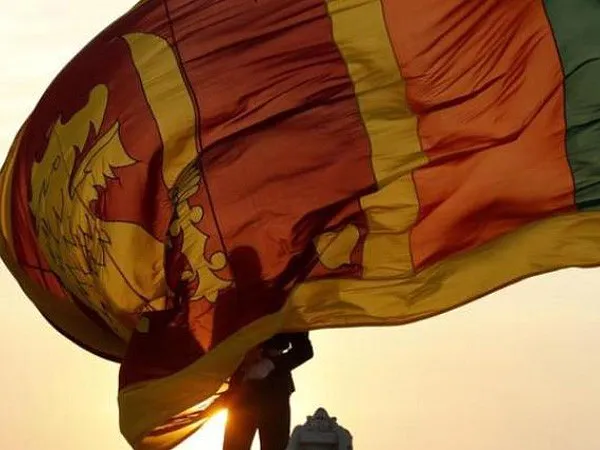As Sri Lankan economy is languishing under the rising debt burden and shrinking foreign exchange reserves leading to shortages of essential commodities including food, fuel and medicines, the anti-government movement in Sri Lanka is intensifying. People’s trust in the government’s ability to solve the economic problems is fast waning and this has led to unprecedented political uncertainty.
Sri Lanka is on the brink of sovereign default as the remaining foreign exchange of $1.9 billion as of March 2022 would not be sufficient to pay the country’s foreign debt obligations for 2022. The country’s debt servicing obligation for 2022 is about $4 billion in 2022. An international sovereign bond repayment of $1 billion is also due to be paid by the government in July 2022. According to Bloomberg, Colombo has total (internal and external) repayment obligations at present stand at $8 billion. The gravity of economic crisis has also increased as the Sri Lankan rupee has plunged to a record low, i.e., SLR 315 to a Dollar, making the SLR as the worst performing currency of the world.
In another similar assessment, J.P Morgan analysts recently estimated that Colombo’s gross debt servicing would amount to $7 billion this year, with a current account deficit of around $3 billion.
The situation in Sri Lanka is dire. For weeks now people have been facing existentialist crisis with acute shortages of essential commodities including food, fuel and medicines. Especially, the power shortages and blackouts despite government’s decision to devote almost half of the diesel stock to power generation and rationing imposed for transport sector have propelled popular uprising. The streets of Si Lanka in the last week have seen public protest on a large scale and yesterday a massive anti-government street protest demanding Sri Lankan President turned into an all-night vigil as over 10,000 demonstrators gathered at the Galle Face Green Urban Park, where Rajapaksa’s secretariat is located. They were chanting “Go home, Gota,” urging the President to resign.
Although Sri Lankan President Gotabaya Rajapaksa has so far declined to resign despite widespread protests against his handling of the economic crisis, the opposition continues to demand resignation from both President and Prime Minister. President had declared state of emergency on April 1. Which he cancelled on April 5 as it further aggravated people’s protests.
Finance Minister Ali Sabri said (April 9) in an interview that Colombo would need about $ 3 billion in external assistance over the next six months to help restore supplies of essential items including fuel and medicines. He “described it a “Herculian task”as Clombo finds it difficult as country’. Sri Lanka is finding it difficult to mobilize funds from the global market due to erosion of its credit rating to the lowest level. Although it has got great relief from Indian assistance all through the crisis, it needs more.
The economic crisis has also deepened political crisis as the ruling coalition lost its majority in Parliament. While President Gotabaya Rajapaksa and Prime Minister Mahinda Rajapaksa declined to resign despite demands from the alliance partners and opposition. The political crisis has worsened since April 3 after the entire 26-member Cabinet was asked to resign which subsequently led to walk out of 41 members of alliance partners from the government. Although the 10-party alliance of the ruling Sri Lanka Podujana Peramuna (SLPP) coalition is due to meet President Rajapaksa to discuss the formation of the all party interim government, the main opposition party Samagi Jana Balawegaya (SIB) said that they are planning to move a no-confidence motion against the government. The talks (April 10) between President Rajapaksa and former President Sri Lanka Freedom Party (SLFP) to discuss politics and economic crisis failed to reach any consensus.
Sri Lanka now pins its hope on the IMF and India along with some fire fighting measures. For example, on April 8, the new central bank Governor raised interest rate by an unprecedented 700 basis points in a bid to tame rocketing inflation and stabilizes the economy. The Finance Minister also revealed that Sri Lanka is also planning to reach out to the rating agencies as the country looks to regain access to international financial markets after being locked out due to multiple ratings downgrades since 2020.
The International Monetary Fund (IMF) said that it is monitoring political and economic developments in Sri Lanka “very closely”. However, the IMF and global partners need to act urgently as time is running out. In some corners it is felt that the US and western advanced nations are slow in coming with assistance to the country in the need to prove the point that Rajapaksa families’ foreign policy giving a disproportional central place to China was wrong and so was the development models comprising economically unfeasible China-assisted “mega projects”.
Although no fresh support has come to Colombo from China as the crisis is intensifying India recently extended a credit line support of $1 billion apart from 270,000 MT fuel, consignments of rice and medicine to the country unconditionally to honour the aspirations of the people of both the countries. Further, the Tamil Nadu Chief Minister has also apprised the Indian government that the State is ready to ship essential commodities like rice and life saving drugs to Sri Lanka. Sri Lanka expects more from India.
The Sri Lankan Finance Minister also looks up to take tough decisions as soon as the present crisis is over. He said the government will raise taxes and fuel prices within six months and seek to reform loss-making state-owned enterprises. This is a signal to the IMF that it would not hesitate to meet the conditionality, if the IMF extends a bailout to the country. The Asian Development Bank has forecasted GDP growth rate of 2.4 % and inflation of 13.3% for the year 2022, but things are becoming difficult for Colombo due to brewing political uncertainty in the country and disruptions caused by Ukraine war.

